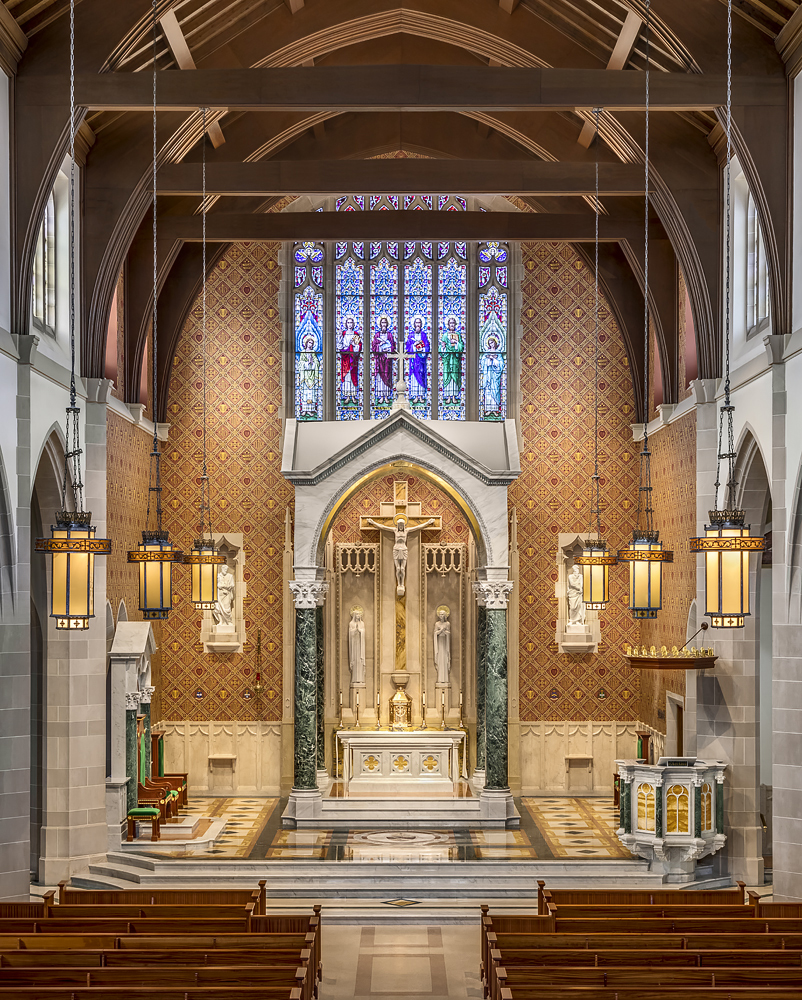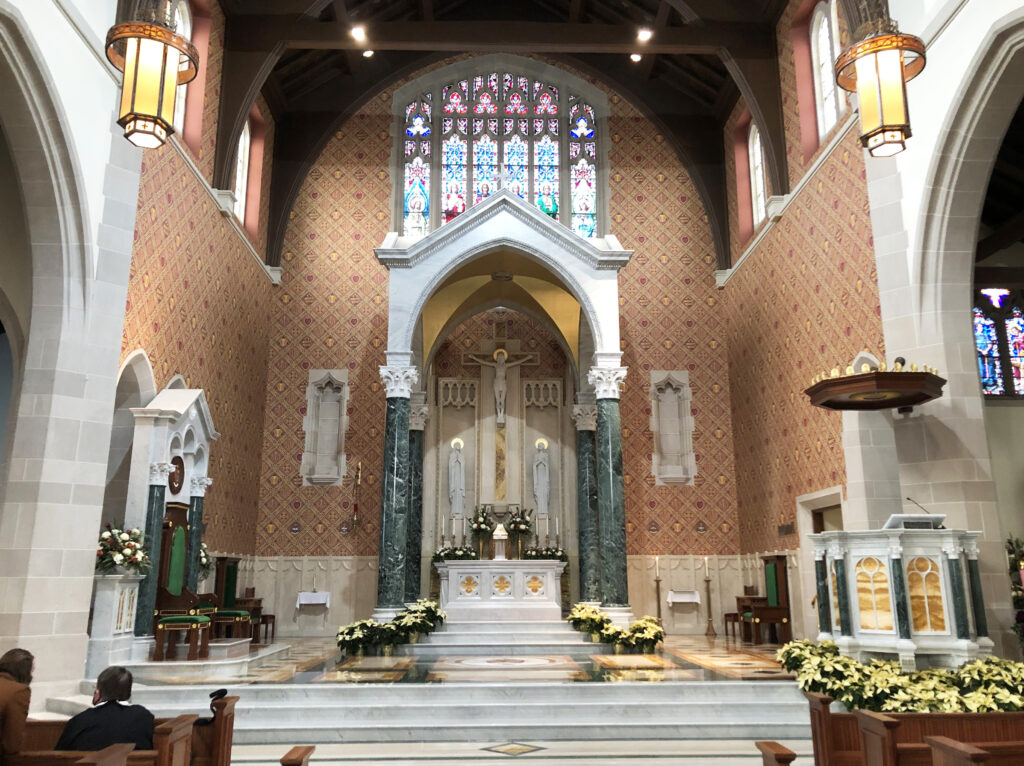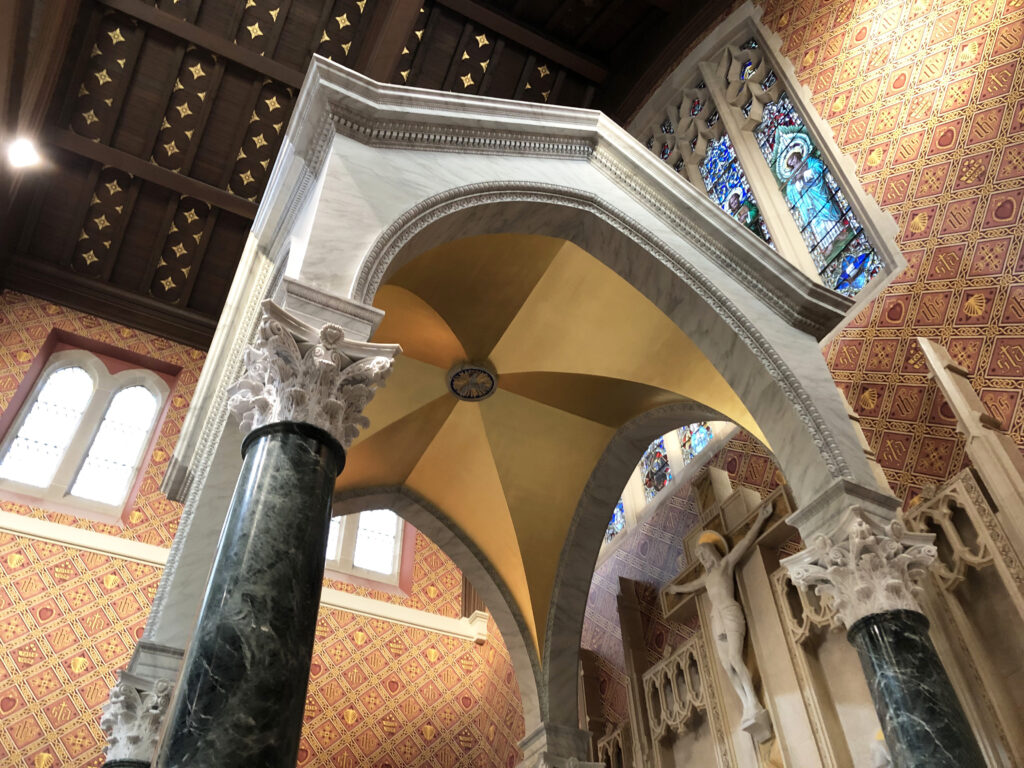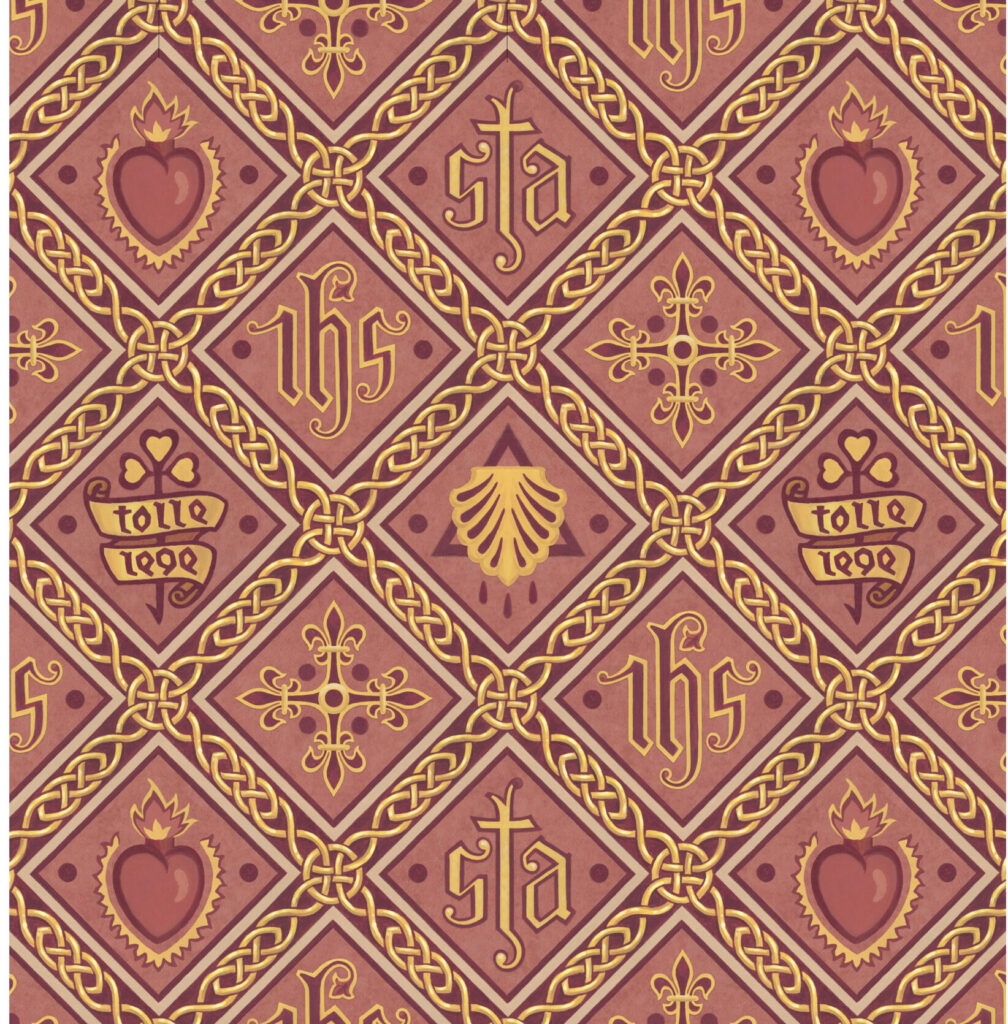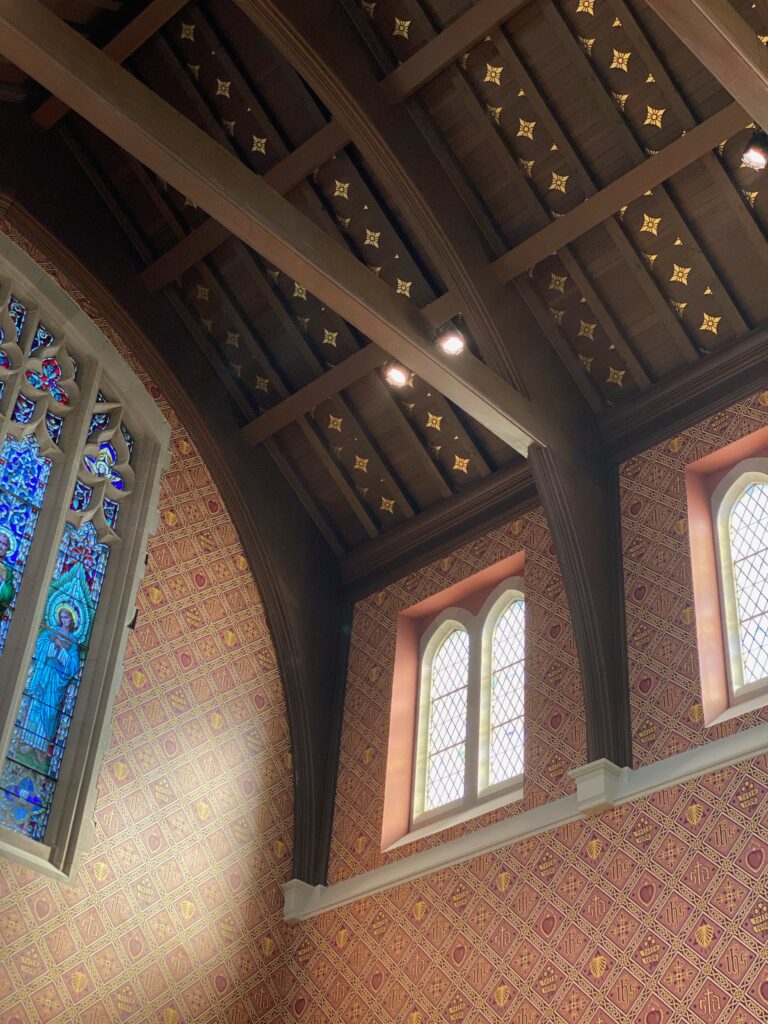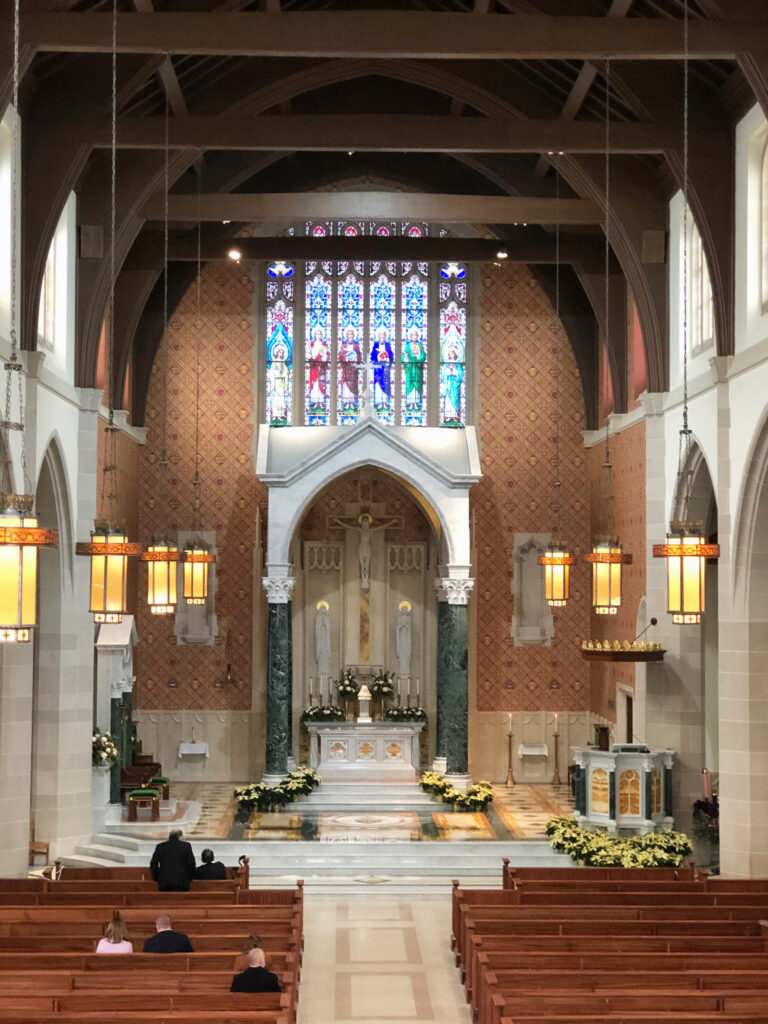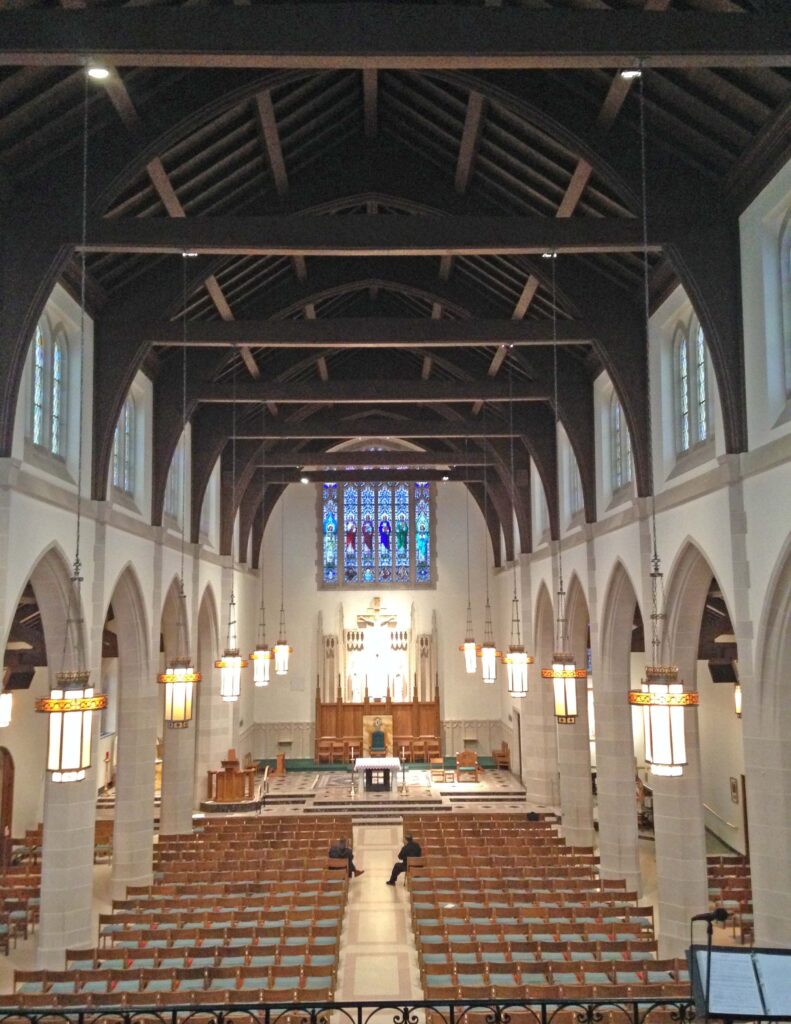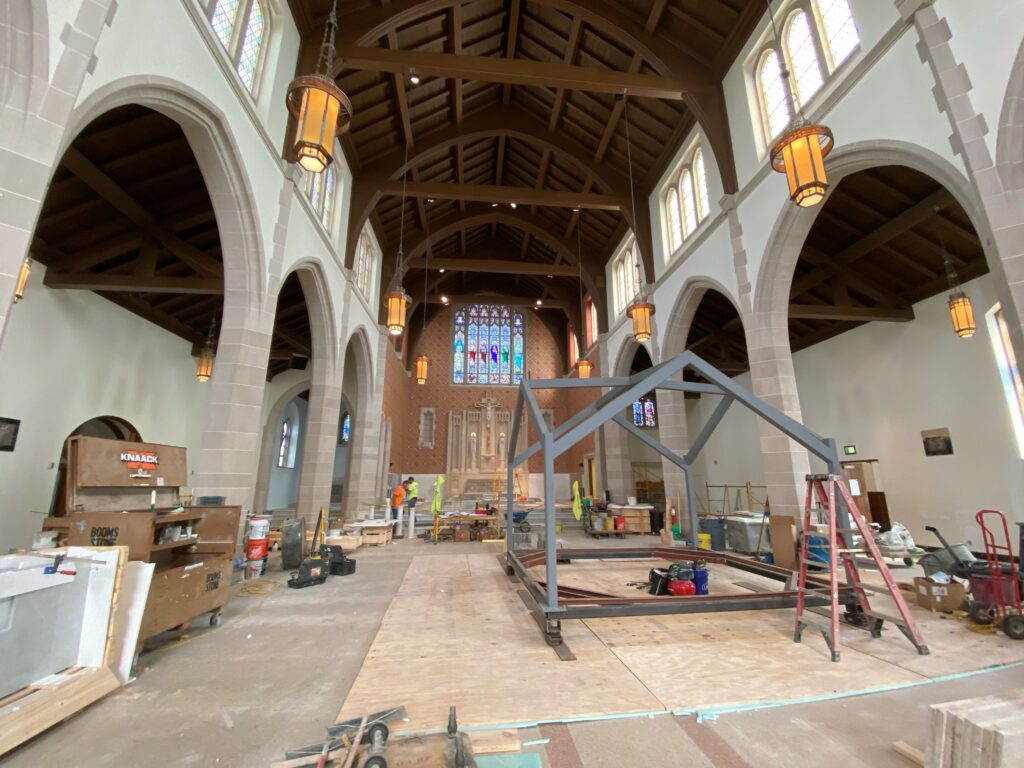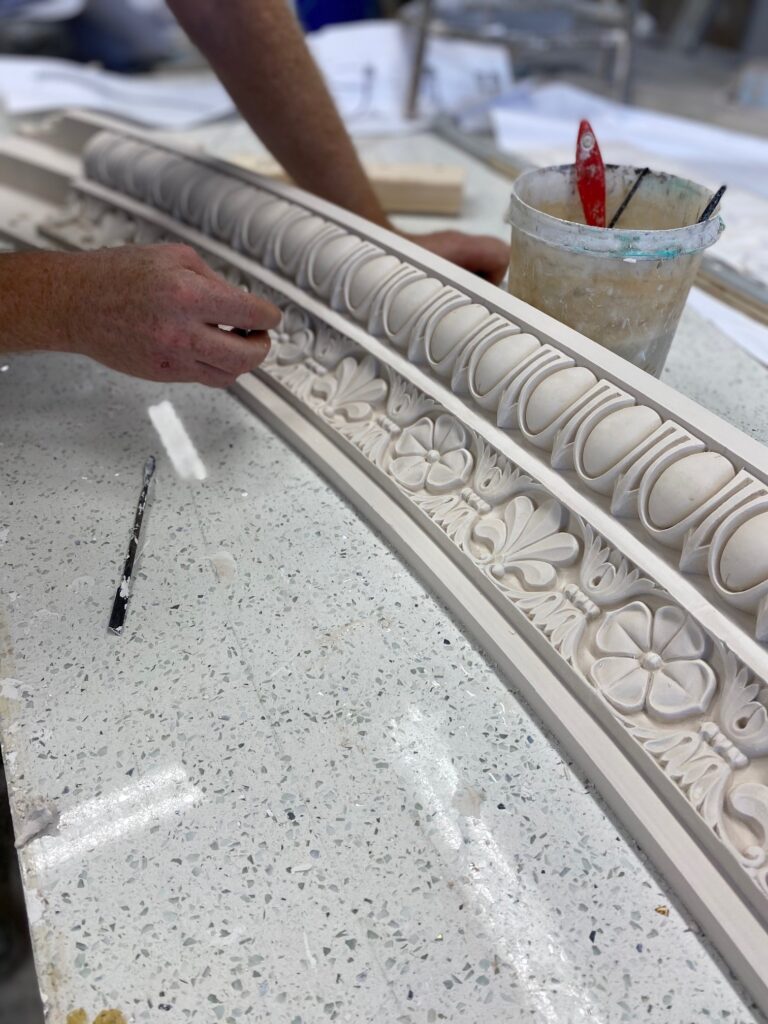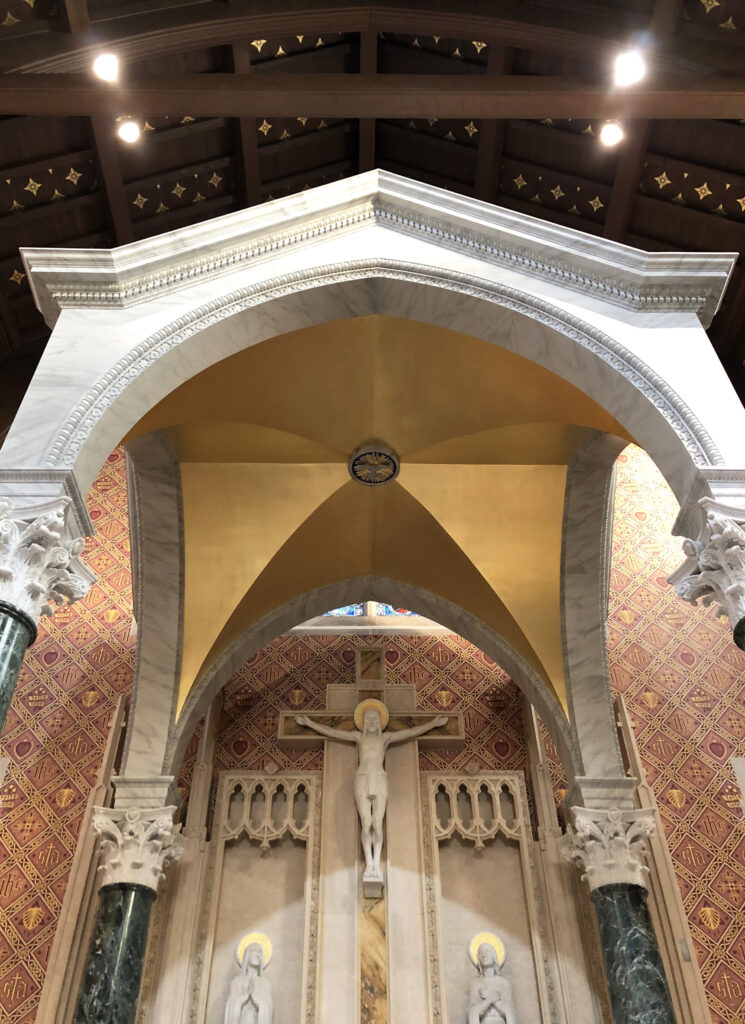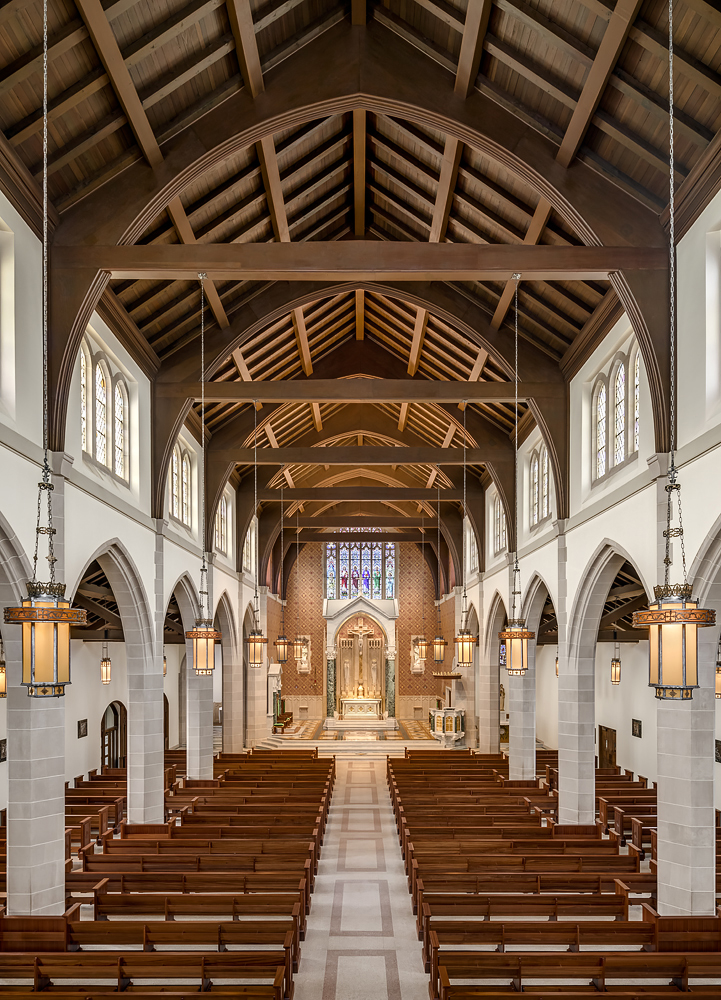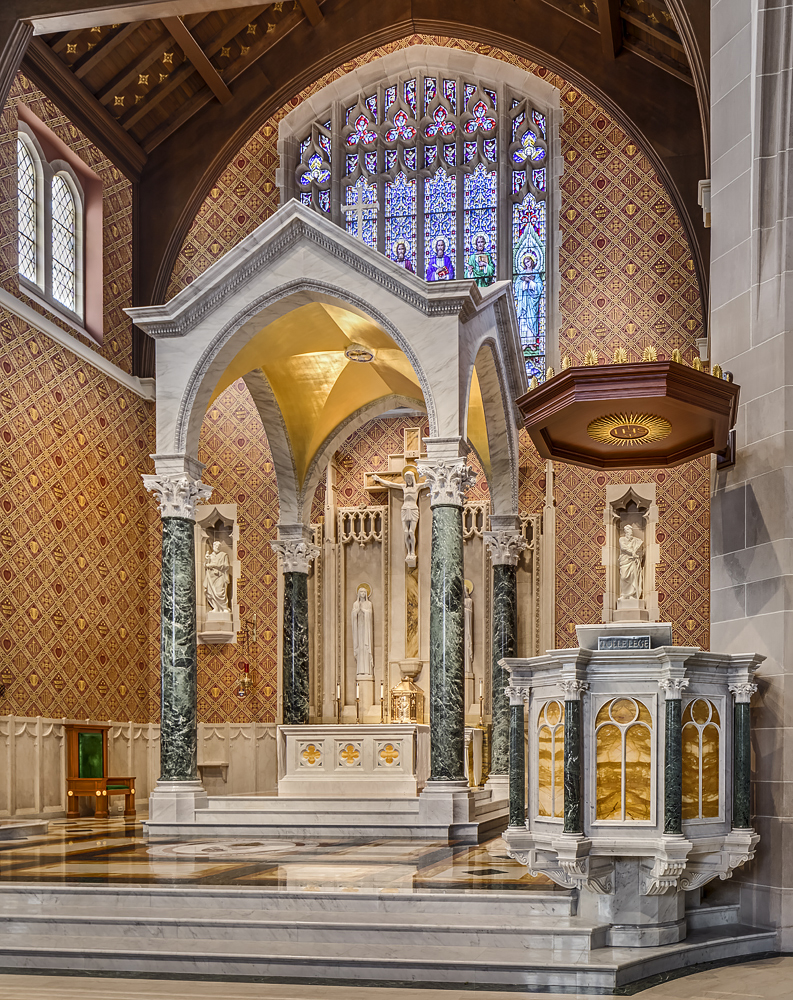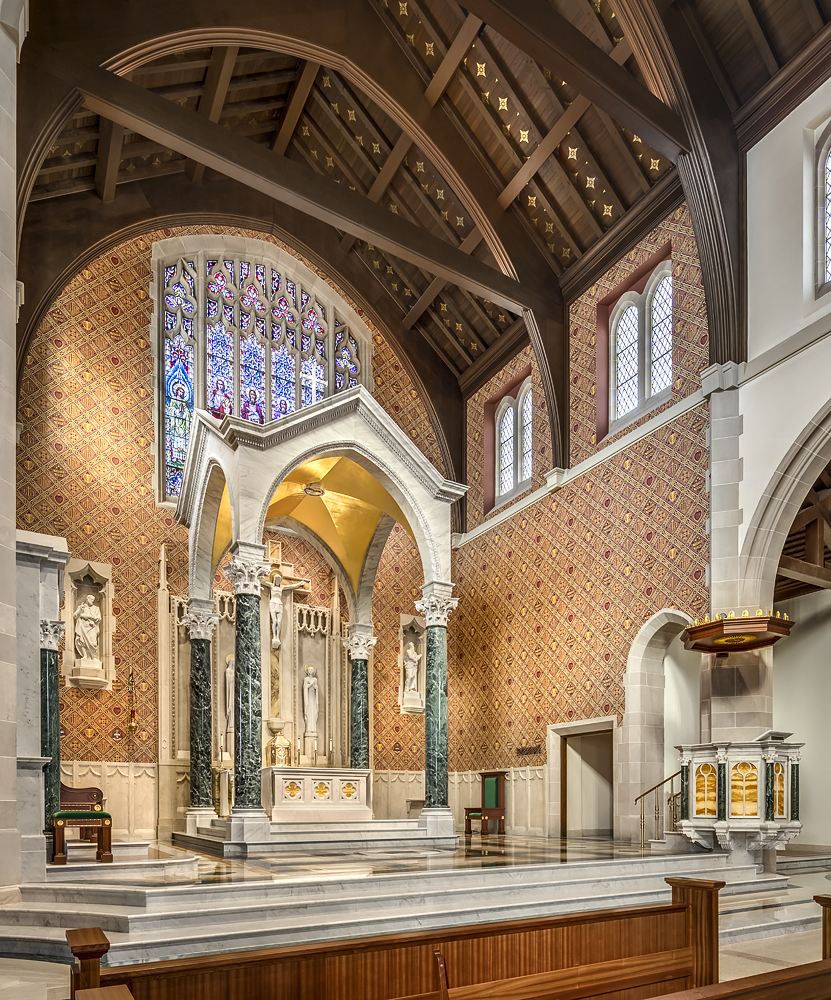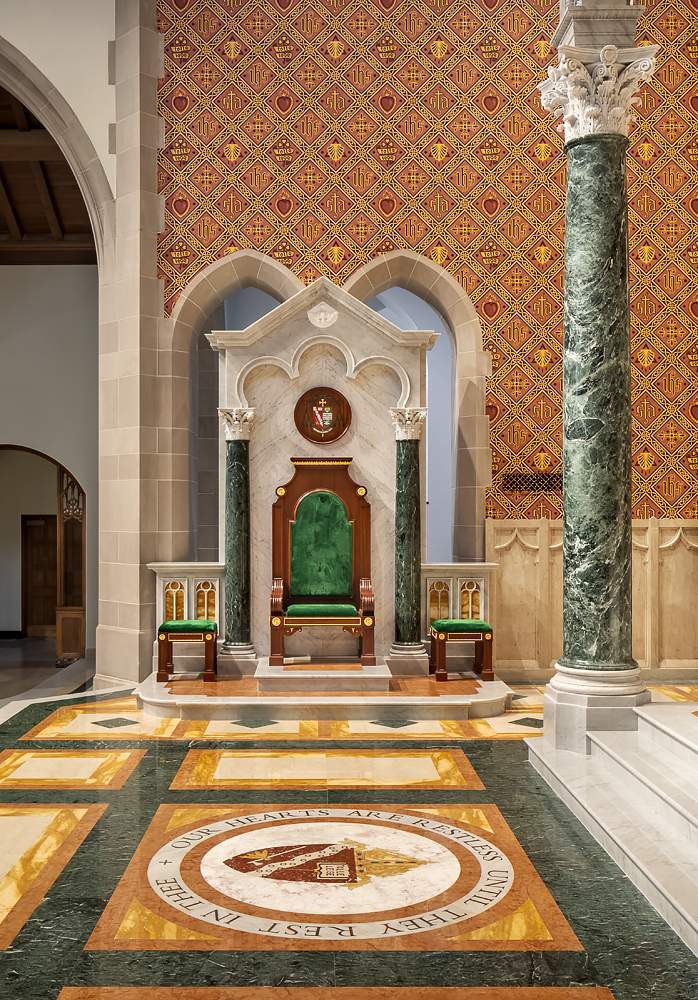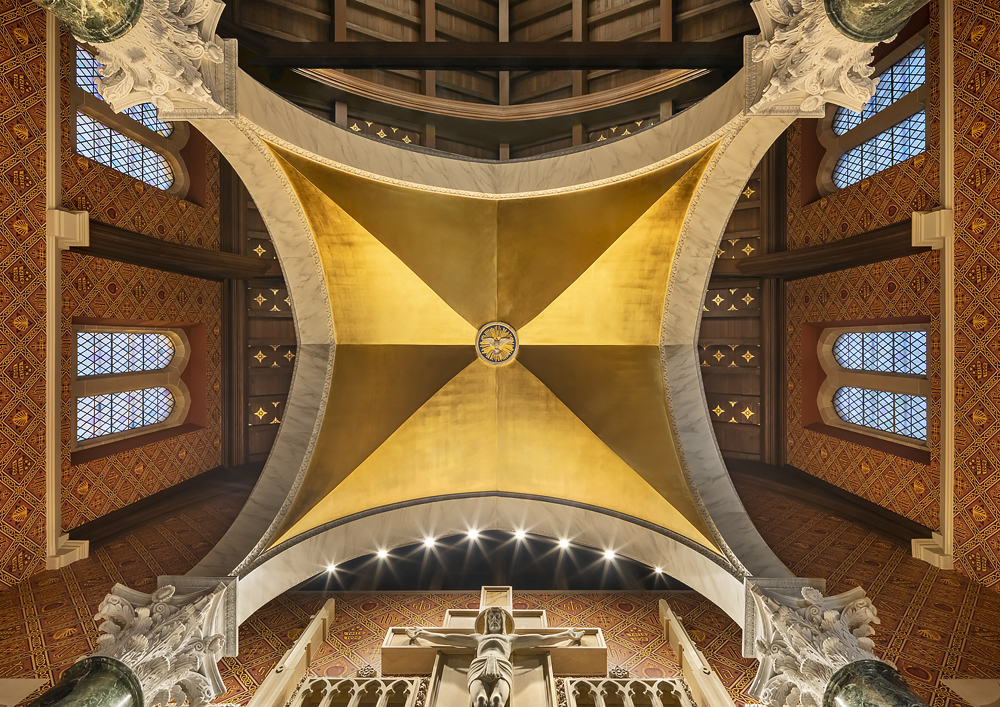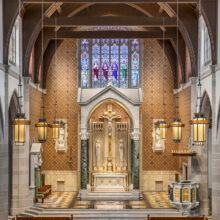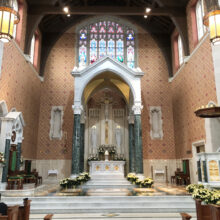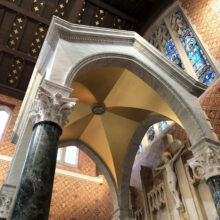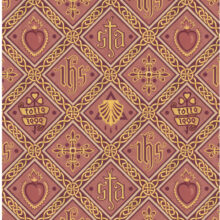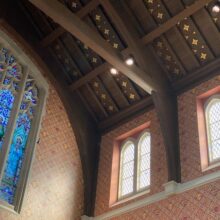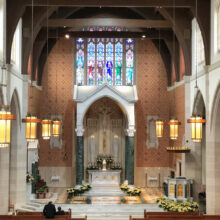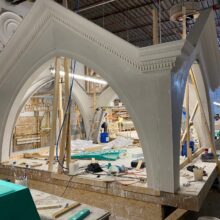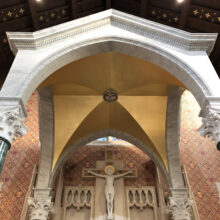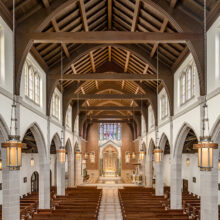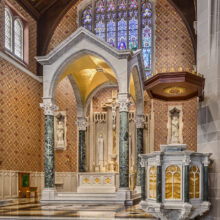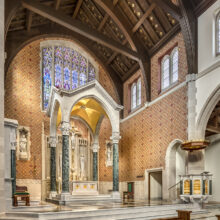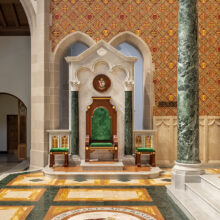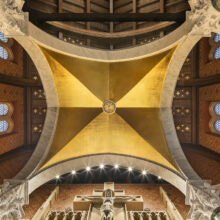St. Augustine Cathedral
Kalamazoo, MI
St. Augustine was designed by the office of renowned ecclesiastical architect Ralph Adams Cram and built in 1951 as a parish church. When Kalamazoo became its own diocese in 1971, St. Augustine was elevated to cathedral status. Designed in the gothic revival style, St. Augustine had great integrity but lacked elements indicative of a cathedral. In 2019 the Diocese of Kalamazoo, Duncan G. Stroik Architect, and Miller Davis embarked on a renewal designed to make St. Augustine a fitting seat for the apostolic authority of the diocese. Notable features of the renewal are the architecturally appropriate marble work, liturgical furnishings, baldachino, and reinstatement of features lost in post-historic campaigns.
EverGreene was engaged to develop finishes in the sanctuary using the architectural language of the cathedral and drawing upon precedents found in Cram’s oeuvre, including gilded stars in the sanctuary ceiling panels and a rich diaper pattern featuring Augustinian attributes on the sanctuary walls. EverGreene’s scope included design, creation of custom wall coverings, wall prep, painting, installation, and the creation and faux painting of the upper plaster elements of an extraordinary Baldacchino to seamlessly integrate with the true marble.
The canvas wall coverings had the largest visual impact of this restoration. Previously, the space had a plain white wall consisting of failing plaster on the north side. The marble reredos melted away into the whiteness of the wall. The new canvas set off all the marble and terrazzo for a much stronger impact. The EverGreene team spent time and attention to precisely align the designs across multiple walls and around corners. The wallcovering our team designed was such an intricate design that perfect leveling and cutting was required.
A unique aspect of this project was the fabrication of the new Baldacchino, the canopy placed over an altar. This structural element was designed and fabricated under a tight timeline in collaboration with this restoration specialists, Duncan G. Stroik Architects’ team, and the Miller-Davis Company. It was constructed on the ground and then lifted up 26 feet in the air on a scaffold for an absolutely perfect installation. The dome of the Baldacchino was gilded, featuring a sculptural cross on top, along with a dove coin in the apex of the dome. It is extremely rare to build a Baldacchino on the ground with all the finished pieces and then lift it up in the air!
The end result yielded a building that appears to have been purposely built as a cathedral.

